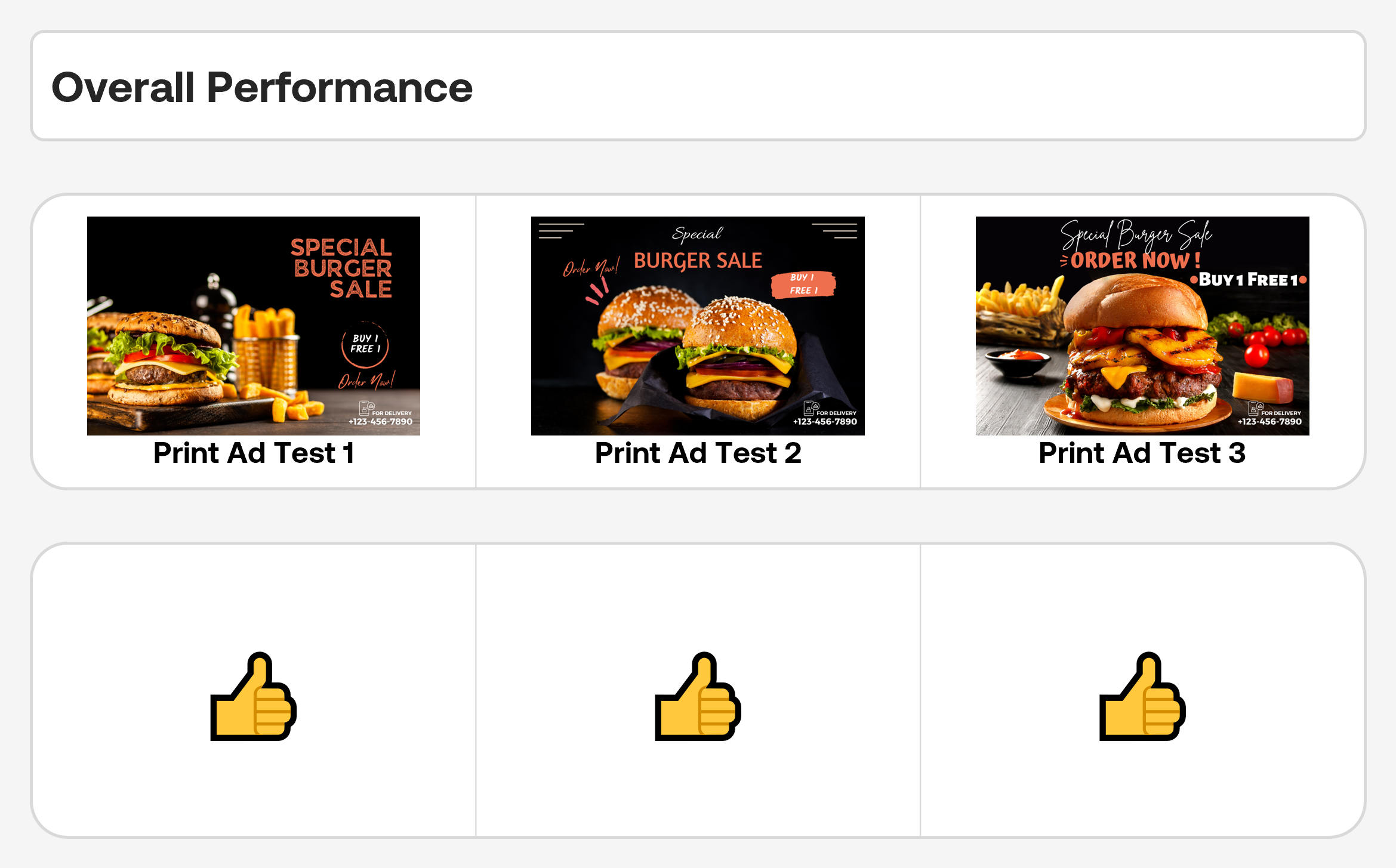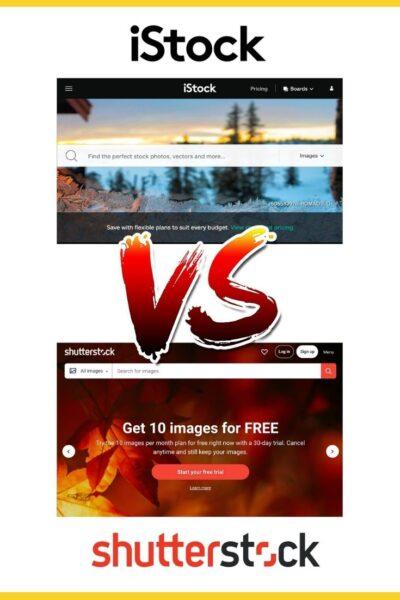Getting your print-on-demand (POD) products in front of the right audience can feel overwhelming, especially with so many ads competing for attention on Facebook. The key to success is testing your ads carefully—seeing what works, what doesn’t, and refining your approach along the way. In this guide, we’ll walk through how to effectively test your POD ads using high-quality Shutterstock images. This way, you can make smarter decisions, save money, and boost your chances of turning viewers into loyal customers.
Why Use Shutterstock Images for Your Print-On-Demand Campaigns

When it comes to creating eye-catching ads, the visual element is everything. Shutterstock offers a vast library of professional, high-resolution images that can elevate your campaigns. Here’s why choosing Shutterstock images makes a lot of sense for your print-on-demand ads:
- High Quality and Variety: Shutterstock has millions of images spanning countless themes, styles, and niches. Whether you’re selling custom t-shirts, mugs, or posters, you’re likely to find images that resonate with your target audience.
- Legal Peace of Mind: Using stock images from Shutterstock ensures you have the proper licensing, reducing the risk of copyright issues that can arise with generic or low-quality photos.
- Fast and Easy Access: Their user-friendly platform allows you to search, preview, and download images quickly, saving you time during your campaign setup.
- Consistency and Branding: Shutterstock provides consistent image quality, helping you maintain a professional look across all your ads, which is crucial for building trust with potential customers.
Plus, Shutterstock images can be easily customized or combined with text and design elements, giving you the flexibility to create compelling ads that stand out. When testing different ad variations, high-quality images can significantly improve engagement and click-through rates, giving you valuable insights into what appeals most to your audience.
Step-by-Step Guide to Setting Up Your Facebook Ad Campaign
Getting your print-on-demand ads up and running on Facebook might seem a bit overwhelming at first, but don’t worry — I’ll walk you through each step to make it straightforward and stress-free. Let’s break it down into manageable parts so you can launch your campaign confidently.
Step 1: Create a Facebook Business Manager Account. If you haven’t already, head over to Facebook Business Manager and set up an account. This platform is where you’ll manage your ads, pages, and billing info all in one place.
Step 2: Connect Your Facebook Page and Ad Account. Make sure your business page is linked to your Business Manager. Then, create an ad account if you don’t have one, or select an existing one. This will be the foundation for your campaigns.
Step 3: Define Your Campaign Objective. When you click “Create,” Facebook will ask you to choose an objective. For print-on-demand ads, “Traffic,” “Conversions,” or “Catalog Sales” typically work well — depending on whether you want to drive visitors to your store or directly sell products.
Step 4: Set Your Budget and Schedule. Decide how much you want to spend daily or for the lifetime of the campaign. You can also set a start and end date, or let it run continuously. Start small, monitor results, and scale up as needed.
Step 5: Define Your Audience. Targeting is key! Use Facebook’s detailed targeting options to reach the audience most likely to be interested in your designs. Consider demographics like age, location, interests (e.g., art, fashion, hobbies), and behaviors.
Step 6: Choose Your Ad Placement. You can opt for automatic placements, letting Facebook decide where your ads perform best, or manually select placements such as Facebook Feed, Instagram, Messenger, or Audience Network. For image-heavy print-on-demand ads, placements like Feed and Stories usually work well.
Step 7: Create Your Ad. Now, it’s time to upload your Shutterstock images, craft compelling ad copy, and select your call-to-action button. Make sure your visuals are high-quality, and your message clearly highlights what makes your products special.
Step 8: Review and Launch. Double-check all settings, preview your ad, and then hit “Publish.” Keep an eye on your ad performance dashboard to monitor how your campaign is doing.
And that’s it! Setting up your Facebook ad campaign might seem detailed, but once you get the hang of it, it becomes second nature. Remember to test different images and messaging to see what resonates most with your audience.
Tips for Selecting Effective Shutterstock Images for Your Ads
Choosing the right images is crucial for making your print-on-demand ads pop and grabbing attention. Shutterstock offers a vast library, but not all images will work equally well for your campaigns. Here are some insider tips to help you pick the best ones.
1. Focus on High-Quality, Clear Images. Always select images that are sharp, well-lit, and high-resolution. Blurry or pixelated images can hurt your brand’s credibility and reduce click-through rates.
2. Match the Image Style to Your Brand. Consistency is key. If your brand has a modern, minimalist vibe, choose sleek, simple images. For a fun, playful brand, opt for colorful and lively visuals. This helps create a cohesive look across your ads.
3. Highlight the Product or Design. Pick images that clearly showcase your print-on-demand design. If you’re selling t-shirts, for example, choose images where the design is front and center, so viewers immediately see what they’re getting.
4. Use Lifestyle and Contextual Shots. Instead of just product mockups, consider images that show people using or wearing your products. Lifestyle shots help viewers imagine themselves enjoying your items, which can boost conversions.
5. Pay Attention to Colors and Composition. Bright, eye-catching colors tend to perform better in ads. Also, ensure the composition directs the viewer’s eye toward the product or message — avoid cluttered images that distract.
6. Consider the Audience’s Interests. Think about what resonates with your target market. For example, if you’re targeting pet lovers, choose Shutterstock images featuring adorable animals that align with your designs.
7. Check Licensing and Usage Rights. Make sure the images you select are properly licensed for commercial use. Shutterstock provides licensing info, so double-check that your chosen images can be used for advertising purposes without issues.
8. Test Multiple Images. Don’t settle on just one image. Create variations with different visuals to see which one performs best. A/B testing can reveal the most engaging imagery for your audience.
Remember, your images are often the first thing people see in your ad. Choosing compelling, relevant Shutterstock images can make a huge difference in attracting clicks and ultimately boosting your print-on-demand sales. Take your time to select visuals that truly represent your brand and connect with your audience’s emotions.
How to Monitor and Analyze Ad Performance
Once your print-on-demand ad featuring Shutterstock images is live on Facebook, the real fun begins — monitoring how it’s performing. Think of it as keeping an eye on your shop window to see what draws people in and what doesn’t. Facebook provides a powerful set of tools through Facebook Ads Manager that makes tracking your ad’s success both straightforward and insightful.
First, familiarize yourself with the key metrics. These include:
- Impressions: How many times your ad was shown. High impressions mean lots of eyeballs, but not necessarily engagement.
- Clicks: The number of times people clicked on your ad. This gives you a sense of how compelling your ad is.
- Click-Through Rate (CTR): The percentage of impressions that resulted in clicks. A higher CTR indicates your ad resonates well with your audience.
- Conversions: When someone completes a desired action, like making a purchase or signing up.
- Cost Per Result: How much you’re paying for each click or conversion. Keeping this low while maintaining quality is key.
To analyze these metrics effectively, regularly check your Facebook Ads Manager dashboard. It offers visual charts and breakdowns, so you can see which images, headlines, or offers perform best. For example, you might notice that certain Shutterstock images get more clicks because they evoke emotion or stand out visually.
Don’t forget to segment your data. Look at performance across different demographics, devices, or placements to identify where your ads shine and where they need improvement. For instance, maybe your ad performs better on mobile devices or within a specific age group.
Additionally, consider using Facebook Pixel — a small piece of code you add to your website — to track actions like purchases or sign-ups after someone clicks your ad. This helps you see the full customer journey and evaluate your ROI accurately.
Finally, keep an eye on the frequency of your ads. If the same people see your ad too often, it might lead to ad fatigue, decreasing effectiveness. Adjust your audience targeting or refresh your creatives if you notice performance dips.
Optimizing Your Print-On-Demand Ads for Better Results
Now that you’re monitoring your ad performance, the next step is optimization. The goal here is to make small tweaks that lead to big improvements without blowing your budget. It’s all about learning what works best and scaling those strategies.
Here are some practical tips to optimize your print-on-demand Facebook ads using Shutterstock images:
- Test Different Images: Don’t settle on just one Shutterstock image. Run A/B tests with different visuals to see which ones resonate most with your audience. Sometimes, a simple change in color or composition can dramatically impact engagement.
- Refine Your Targeting: Use Facebook’s detailed targeting options to reach the most relevant audience. If certain demographics respond better, focus more on them and consider excluding underperforming groups.
- Adjust Your Copy and Call-to-Action (CTA): Your ad copy should complement the images. Try different headlines, descriptions, and CTAs to find the combo that drives the best results.
- Optimize Your Budget: Allocate more budget to top-performing ads while pausing or tweaking underperformers. Facebook’s automatic rules can help you set thresholds for when to increase, decrease, or stop ads.
- Use Custom and Lookalike Audiences: Build audiences based on your existing customers or website visitors to target people more likely to convert.
- Leverage Dynamic Creative: Facebook can automatically generate different ad variations from your assets. Upload multiple images, headlines, and descriptions, and let Facebook optimize which combinations work best.
Remember, optimization is an ongoing process. Keep testing new Shutterstock images, adjusting your audience, and refining your messaging. Over time, these small but strategic tweaks will help improve your ad performance, increase conversions, and make your print-on-demand business more profitable.
And don’t forget — always review your insights regularly. The more you understand your audience and what appeals to them, the better your ads will perform. Happy advertising!
Common Mistakes to Avoid When Testing POD Ads on Facebook
Testing print-on-demand (POD) ads on Facebook can be a game-changer for your business, but it’s easy to fall into some common pitfalls that can hinder your success. Let’s talk about what to watch out for so you can make the most of your ad testing efforts.
1. Using Low-Quality or Unrelated Shutterstock Images
While Shutterstock offers a vast library of images, not every image is a good fit for your product or brand. Using blurry, low-resolution, or unrelated images can make your ad look unprofessional and turn off potential customers. Always select high-quality images that resonate with your target audience and accurately showcase your products.
2. Ignoring Audience Targeting
Trying to reach everyone with the same ad is a common mistake. Facebook’s powerful targeting options are your friends! If you don’t specify your audience—by interests, age, location, or behaviors—you might waste your budget on viewers who aren’t interested. Take the time to define your ideal customer before launching tests.
3. Overloading Ads with Too Much Text
Facebook recommends keeping text on images to a minimum—generally less than 20% of the image area. Overly text-heavy images can result in reduced reach. Instead, let the images do the talking, and use compelling copy in the ad description or headline.
4. Not Testing Multiple Variations
Relying on a single image or ad copy limits your understanding of what works. Always create multiple ad variations—different images, headlines, and calls-to-action. This way, you can optimize for the best performers and increase your ROI.
5. Ignoring Metrics and Data
Testing is all about data. If you don’t monitor how your ads are performing, you won’t know what’s working and what’s not. Use Facebook Ads Manager to track key metrics like click-through rate (CTR), conversion rate, and cost per result. Adjust your campaigns based on real insights.
6. Setting and Forgetting
Ad testing isn’t a set-it-and-forget-it process. Regularly review your ad performance, pause poor performers, and allocate more budget to winners. Testing is ongoing—keep refining your visuals and targeting to maximize results.
By avoiding these mistakes, you’ll set yourself up for more effective POD ad campaigns on Facebook. Remember, successful advertising is a mix of good visuals, smart targeting, and continuous optimization.
Conclusion and Next Steps for Successful POD Advertising
You’ve learned how to leverage Shutterstock images for your Facebook ads and the importance of testing different variations. Now, let’s wrap up with some practical next steps to turn your knowledge into action and grow your print-on-demand business.
Next Steps:
- Curate a Library of High-Quality Images: Regularly browse Shutterstock to find fresh, appealing images that fit your niche. Keep a folder of top picks for quick access during ad creation.
- Create Multiple Ad Variations: Design several versions of your ads, swapping out images, headlines, and calls-to-action. This approach helps identify what resonates best with your audience.
- Define Your Target Audience: Use Facebook’s detailed targeting options to narrow down who sees your ads. Consider demographics, interests, and behaviors related to your niche.
- Set Clear Goals and Metrics: Decide what success looks like—more sales, website visits, or engagement—and track these metrics diligently.
- Monitor and Optimize: Regularly check your ad performance. Pause underperforming ads, and increase budget for winners. Use Facebook’s split testing features to automate some of this process.
- Scale Your Winning Campaigns: Once you identify effective ad combinations, consider gradually increasing your budget to reach more potential customers without sacrificing ROI.
Remember, successful POD advertising is a marathon, not a sprint. Keep testing, learning, and refining your approach. With patience and persistence, you’ll see your Facebook campaigns generate consistent sales and help grow your brand.
If you stay committed to best practices—using quality images, targeting the right audience, and continuously optimizing—you’ll turn Facebook advertising into a powerful tool for your print-on-demand success. Happy selling!


